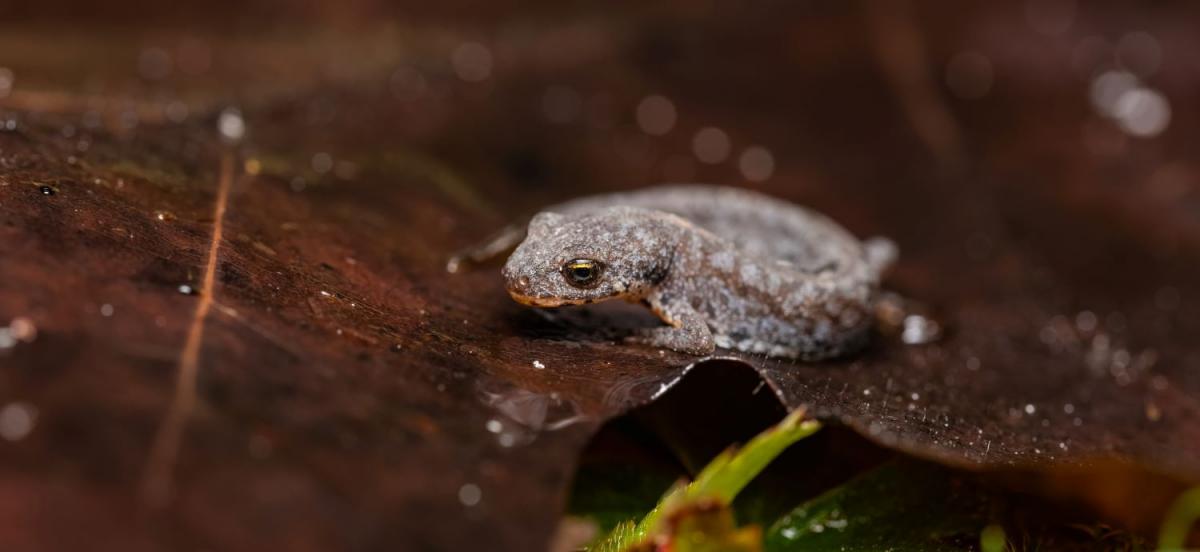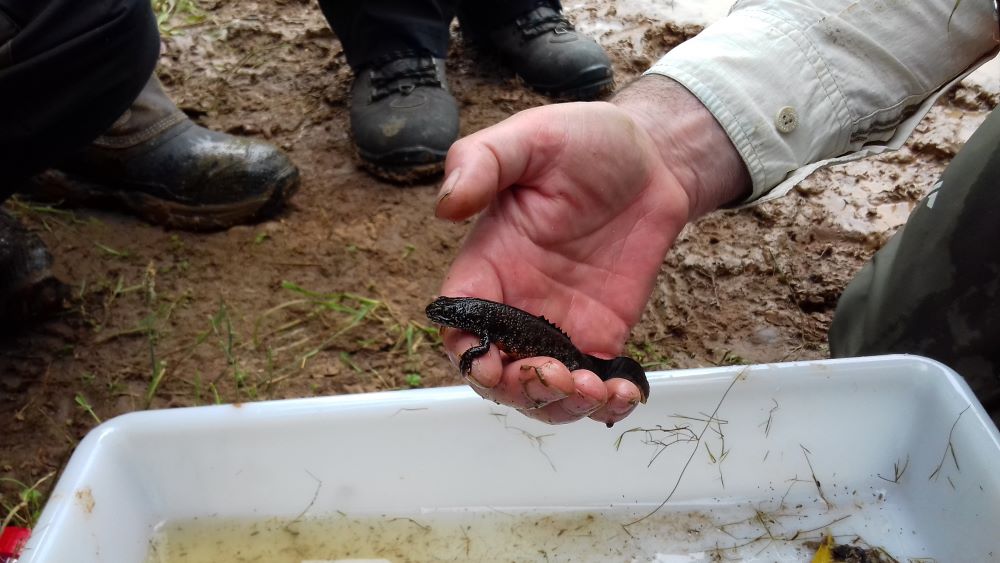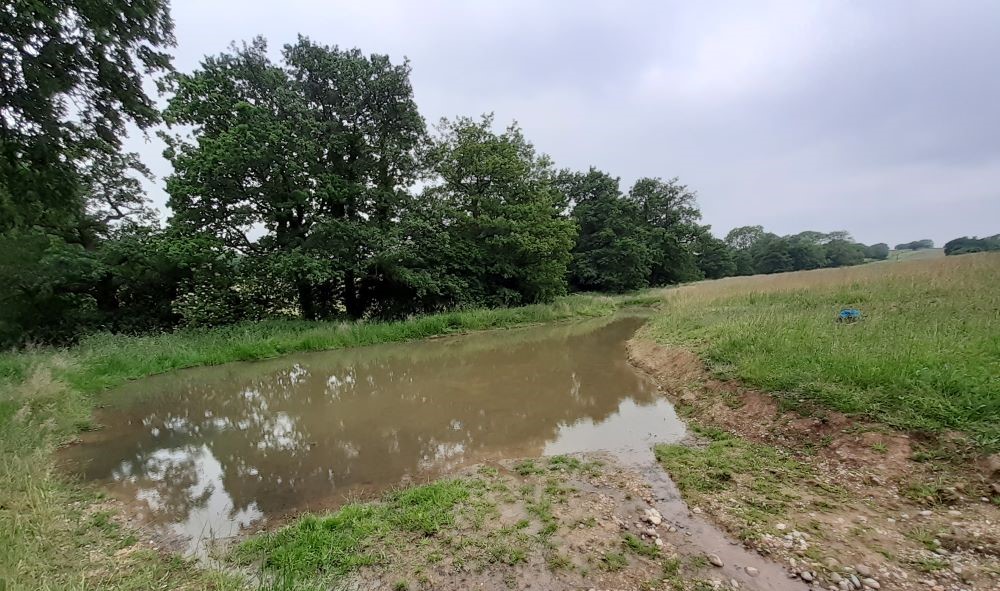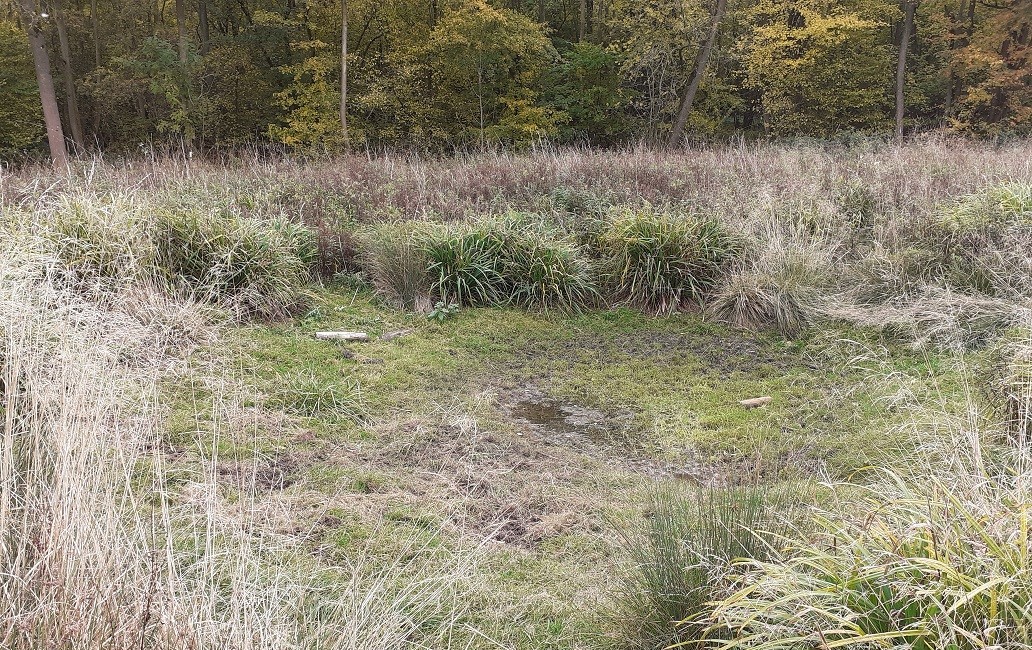
Managing ponds for biodiversity
This year we have been carrying out surveys and mapping all ponds found in the Heart of England Forest. Imogen Rutter, Biodiversity Officer, shares some of the findings and what they mean for the management of the Forest’s ponds.
Biodiversity value of ponds
Before starting the surveys, our estimations of the number of ponds in the Forest were around 50, but we can now confidently say there are well over 100 ponds here, and probably many more that we have not found yet.

Ponds are incredibly rich in biodiversity, often being home to many rare species, such as water-violet, true fox sedge and medicinal leech. Relative to their size, ponds hold a disproportionately high level of species richness, and often more biodiversity than larger ecosystems such as rivers and lakes. They are, however, often undervalued and overlooked as a habitat.
At the start of the 20th Century there were an estimated 800,000 ponds in Great Britain, which declined to 200,000 by the 1980s. Pond creation and management has increased since then, and there are now an estimated 478,000 ponds in England, Wales, and Scotland, according to the Freshwater Habitats Trust.
Findings of the pond surveys
Many ponds have started to silt up and are overshaded
Many of our ponds have become terrestrialised (dried out) and overshaded with vegetation - quite typical for ponds in the UK, due to having had no recent management. Many of these ponds would have originally been dug on farmland as pits to extract clay or marl (nutrient-rich clay), which was used as a form of fertiliser prior to industrialisation.
Over time as these have gone unmanaged or abandoned, ponds eventually fill up with silt, dry out permanently and become shaded by trees.
Unless the surrounding woodland has been established for a long time (more than 50 years), a high number of over-shaded ponds is generally detrimental for wildlife as it decreases cover by herbaceous plants and grasses. It is important to leave some shaded areas when managing ponds, especially by wetland trees such as willow and alder, as this provides important habitat.
In the autumn we will look at ways to improve some of the ponds we currently have, as well as investigating places where we can create new ponds.
Great crested newts are widespread in the Forest

Part of our pond monitoring this year has included testing the water for great crested newts, a species protected by law in the UK and one which has been particularly affected by pond loss and deterioration. This involves taking samples from the water and sending it off to a lab to be tested for eDNA (environmental DNA). This is genetic material that has been shed by great crested newts into the water and can tell you whether great crested newts are present, but not an estimate of population size.
Our testing so far between 2019 and 2021 has shown that at least 12 ponds within the Forest are positive for great crested newts, at five different sites across the Forest.
Even “ugly” ponds have value
Many ponds don’t look particularly inviting with murky water, no aquatic plants and shading on all sides from trees. However, some of these “uninviting” looking ponds, such as the one below at Binton, have shown positive results for great crested newts.
This means that we will have to be very careful when managing this pond to not disturb or remove great crested newt habitat. This shows the importance of surveying beforehand for wildlife and being careful to not manage ponds purely to look aesthetically pleasing.

54 species found during pond survey

Perhaps the best audit of the biodiversity of our ponds came from our Bioblitz held in July. This was a much more in depth look at all the wildlife in the Middle Spernal area of the Forest, with the aim to count as many species as possible in a 24-hour period.
At least 25 species were found during the pond survey, including water spiders, diving beetles, aquatic true bugs, and dragonfly larvae. A further 29 species were observed around the ponds on bird, bat, and dragonfly surveys.
Some of these included Red or Amber List Species of Conservation Concern such as grasshopper warbler, redstart, and reed bunting; bat species including Daubenton’s and noctule, and amphibians including smooth newt, great crested newt, and common frogs.
This goes to show the great importance of ponds as a water and food source for a wide variety of species, as well as habitat for freshwater-dwelling species.
Creating new ponds is just as important as managing older pond
One of the most important things to consider about pond management is the context of the landscape they sit within and their connectivity to surrounding ponds. Creating new ponds, with due consideration to ensure they are landscaped in a “natural” way, is always going to be valuable habitat creation.

Isolated ponds within former farming landscapes are most likely poorly connected to other areas of wetland, and therefore the populations within them are vulnerable to localised extinction, even with good management. The best solution to this is to create more ponds nearby of different shapes, sizes, and depths. Variety is key - the most important thing is not to create ponds that all look exactly the same.
The best places to create ponds are in areas that are already low-lying, or which accumulate water, or in areas that are fed by natural springs or land drains/drainage ditches. Ponds do not need to be deep to be good quality habitat – shallow scrapes of less than 50cm depth are important feeding areas for wetland birds such as curlew, snipe, and lapwing as they create shallow muddy areas full of insects.
Temporary ponds are very important
One of the most important parts of the pond habitat is the ‘drawdown zone’. This is the area which is subject to seasonal fluctuations in water depth, being wetter in winter and drying out in summer.
This is an area of exceptionally rich wildlife habitat, and important for marginal plant species that need some exposure to air for plant seeds to germinate. Some species of dragonfly, such as the southern hawker and the brilliant emerald lay their eggs in the damp, exposed drawdown zone.
In comparison, deeper areas of 30cm+ in depth are used by a relatively small number of species. That’s why it is important when creating ponds to make sure the edges are gently graded, with plenty of shallow and muddy edges.

Wonderful wetlands
Find out more about the plants and wildlife that these biodiverse habitats support in the Forest. Read our wetland habitat focus article.



